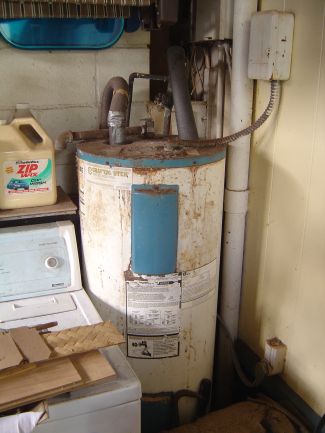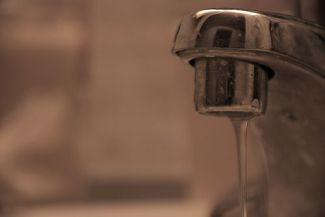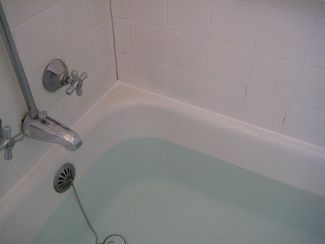10 Tips for Avoiding Plumbing Emergencies
Plumbing maintenance may not be the most exciting topic to read about, but it is well worth your attention! By regularly examining your plumbing system, and performing preventative maintenance, you can save yourself from both costly repair bills and the slow, steady expense caused by drips and leaks. Read on for a maintenance checklist to help you stay ahead of common plumbing problems.

1. Boiler and water heater: Inspect and clean your boiler each year before the heating season. In addition, many plumbers recommend draining and cleaning your water heater annually. Most people hire a professional to handle these tasks, due to their technical nature, and often they are even included in your plumbing fixture’s service contract.
2. Valves: Locate all your shut-off valves and turn them off, then back to their original position, to make sure they would not be stuck open in the event that you need to shut the water off. While you are at it, look them over for any sign of corrosion, which could lead to an undetected leak. Replace any valves that are not working properly. Finally, make sure that your entire family knows where your shutoff valves are located, especially the main one, since this is very valuable information in case a leak occurs.
3. Leaks: Leaks can develop in many different places in your plumbing system and should be addressed immediately to curtail waste and water damage. Periodically check for any of the following signs of trouble: soft flooring near toilets, bathtubs, dishwashers, water heaters or washing machines; dampness inside sink cabinets; soft walls or loose tiles that could signal a leak inside a wall; pipes with rust or mineral deposits; constant dampness around faucets or toilets; and finally toilets that keep running after being flushed. Use water shut off valve or water leak detection systems to alert you when water leaks occur.
 4. Old or malfunctioning fixtures: Generally, toilets, dishwashers, washing machines, water heaters, and boilers that are more than 12 years old are good candidates for replacement. New appliances will be more energy and water efficient. Check the item’s serial number, since this often indicates the year it was manufactured. Companies use a variety of coding methods, so perform a quick internet search to find out what to look for. Additionally, replace old faucets with new, washer-less models to save on maintenance costs, and replace any hardened or cracked hoses on washers and dishwashers to reduce the risk of a rupture. The old adage “If it isn’t broken, don’t fix it,” does not always make sense when it comes to plumbing! Keep in mind that by swapping the old plumbing fixtures for new, more efficient models you could save money every month on your energy and water bills in addition to avoiding costly water damage repair bills.
4. Old or malfunctioning fixtures: Generally, toilets, dishwashers, washing machines, water heaters, and boilers that are more than 12 years old are good candidates for replacement. New appliances will be more energy and water efficient. Check the item’s serial number, since this often indicates the year it was manufactured. Companies use a variety of coding methods, so perform a quick internet search to find out what to look for. Additionally, replace old faucets with new, washer-less models to save on maintenance costs, and replace any hardened or cracked hoses on washers and dishwashers to reduce the risk of a rupture. The old adage “If it isn’t broken, don’t fix it,” does not always make sense when it comes to plumbing! Keep in mind that by swapping the old plumbing fixtures for new, more efficient models you could save money every month on your energy and water bills in addition to avoiding costly water damage repair bills.
 5. Caulking: Check and re-do any aging caulking around bathtubs, showers, toilets, and sinks that might be allowing water to penetrate the surrounding structure.
5. Caulking: Check and re-do any aging caulking around bathtubs, showers, toilets, and sinks that might be allowing water to penetrate the surrounding structure.
6. Basement Flooding: If you live in an area prone to flooding, or on a lot with poor site drainage, consider installing a basement sump pump if you do not have one already. Additionally, you can install a battery backup sump pump or water powered sump pump as a preventative measure to take over the pumping duties in the event that a storm knocks out your power.
7. Septic: If you have a septic system, any persistently marshy areas in your drainage field may signal a leak in your septic line. Although pumping a septic tank is an essential element of plumbing maintenance, there is no hard and fast rule governing how frequently you should pump the tank. It depends on several factors, like the number of people in your household, whether there is a garbage disposal, the size of your tank, its system design, and even the temperature in your region. Consult a septic expert to find out how often you should pump your septic tank.
8. Low water pressure: Test for low water pressure by running water from your tub faucet and then opening the kitchen faucet. If the pressure decreases when you open the second faucet, you should get a plumber to analyze the problem. Low water pressure is often caused by a leaks or sediment build-up in pipes.
 9. Drains: Clogged drainpipes can often be avoided by regularly cleaning your drains with an eco-friendly drain cleaner. One easy way to clean your kitchen garbage disposal is to send some ice through it to clean out any grease that may have accumulated inside. Also, look for bubbles escaping up from a drain while water is trying to go down, as this could indicate a drain vent problem.
9. Drains: Clogged drainpipes can often be avoided by regularly cleaning your drains with an eco-friendly drain cleaner. One easy way to clean your kitchen garbage disposal is to send some ice through it to clean out any grease that may have accumulated inside. Also, look for bubbles escaping up from a drain while water is trying to go down, as this could indicate a drain vent problem.
10. Frozen pipes: If you live in an area that experiences cold winters, like northern U.S. states or Canada, it is well worth your time to install and maintain insulation around your cold water supply pipes. Take extra care with any length of pipe that has been previously frozen or is exposed to wind or cold outside temperatures.
Whether you perform these maintenance checks yourself or hire a professional to handle them, it is a worthwhile investment of your time or money. By taking preventative measures, you greatly reduce the risk that you encounter costly surprises down the road.
Image sources plus0ne opiebreath and aerophish
 The 10 Tips for Avoiding Plumbing Emergencies by Water Damage Defense, is licensed under a Creative Commons Attribution-ShareAlike 3.0 Unported License.
The 10 Tips for Avoiding Plumbing Emergencies by Water Damage Defense, is licensed under a Creative Commons Attribution-ShareAlike 3.0 Unported License.
